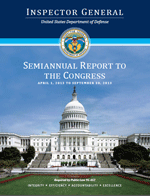I saw a nice article in Politico’s Morning Defense this morning about the upcoming DoD Quadrennial Defense Review, commonly referred to as the QDR. I fondly remember my days in the Pentagon wrestling with the QDR gurus, the best and brightest thinkers of all the Services, getting together to figure out how their Service was going to get more money. The knives were out as the behind-the-scenes point papers on the vulnerability of aircraft carriers, the shear madness of fleets of supersonic, stealth airplanes, and the end of the need for “Boots on the Ground” proliferated like rabbits in a viagra factory. I suppose it was a useful exercise because it is good to sit back and evaluate future threats and the capabilities needed to counter them. The QDR overseen by Secretary Gates was a bit different in that the QDR was essentially written before the whole process began. The result was a QDR which didn’t make too much of a wake, maintained the status quo for the most part, and kept most everybody happy. For those interested in the upcoming QDR issues I recommend an outstanding report by CSIS on the results of a recent conference on the subject.
I predict this next QDR is likely to be more of the same. The biggest reason is that while the QDR is not supposed to be constrained by budgets and the taxpayers ability to continue to fund DoD at ever increasing levels, it is impossible to de-link strategy and money. The cute buzz word which gets around this issue is “informed.” We say that while the QDR is not budget constrained, it is “informed” by it. Informed is one of those words or phrases I call Pentagonisms. They emerge from time to time in an attempt to “be truthful without telling the truth.” Those of you who have spent anytime in the Pentagon can probably come up with several Pentagonisms. Some that come to mind are robust, littoral,operationalize, detainees, etc. There is a nice article by Kate Bateman in USNI Proceedings on this subject that I commend to your reading.
Back to QDR. The big debate is rather or not to be constrained by budgets. I’m not quite sure what difference there is between a QDR that “fiscally informed” and one that’s constrained by budgets. It’s all the same in my book. DoD should admit that and get on with it. But in developing a strategy that is either “constrained” or “informed” by budgetary realities, DoD must be careful to not develop a strategy against an unconstrained future. By that I mean that there has to be a dose of reality in the vision of the future security environment. There is a tendency to make the enemy ten feet tall, to give more credit than is due and generally overestimate the threat. Given the uncertainty of the future, that’s understandable and perhaps even necessary in some cases. But the Congress and American public should realize that in many cases our strategy is based on the worst case scenario. That’s good business in some areas, cyber security of instance, but not in all areas. In order to make the budgetary compromises necessary to adequately defend America there must be some wiggle room. If everything is important and absolutely critical to national defense how can one make compromises? So I hope the QDR avoids the end-fighting and back biting of past QDRs and focuses on a realistic threat environment with capabilities best suited to meet the threats. Given the past history however, I can’t help but thinking…… Q•D• arrrgh. I’ll be glad when it’s over!



